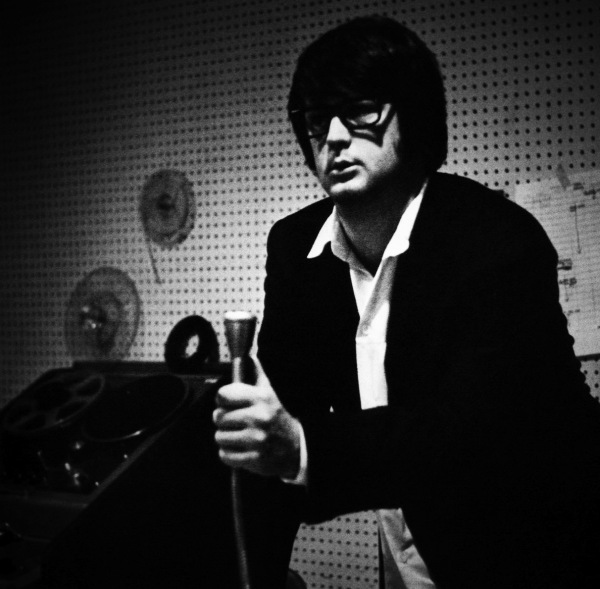On April 7th, Brian Wilson will release his 11th solo studio album, No Pier Pressure, having returned to Capitol Records, keepers of The Beach Boys’ golden era. This summer Brian will be touring across the USA with Rodriguez, the subject of the Academy Award-winning documentary Searching For Sugarman. The tour stops at The Mann on June 29th.
PREVIOUSLY: Teenage symphonies to God. That’s the phrase Beach Boys auteur Brian Wilson used to describe the a heartbreaking works of staggering genius he was creating in the mid-’60s, when his compositional powers were achieving miraculous states of beauty and innovation even as his fevered faculties skirted the fringes of madness. With the 1966 release of Pet Sounds, The Beach Boy’s orchestral-pop opus of ocean-blue melancholia, Brian clinched his status as teen America’s Mozart-on-the-beach in the cosmology of modern pop music.
Less than a year later, he would fall off the edge of his mind, abandoning his ambitious LSD-inspired follow-up, an album with the working title Dumb Angel later changed to Smile, which many who were privy to the recording sessions claimed would change the course of music history. Instead, it was The Beatles who would, as the history books tell us, assume the mantle of culture-shifting visionaries with Sgt. Pepper’s Lonely Hearts Club Band, released a few months after Wilson pulled the plug on Smile. Meanwhile, Wilson sank into a decades-long downward spiral of darkness, exiling himself to a bedroom hermitage of terrifying hallucinations, debilitating paranoia, Herculean drug abuse and morbid obesity. While he would later recover 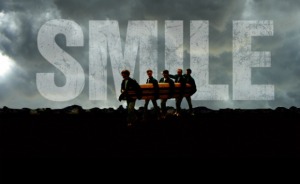 some measure of his sanity, he would never again craft a work of such overarching majesty
some measure of his sanity, he would never again craft a work of such overarching majesty
In the wake of all the breathless hype for an album that was never finished, Smile took on mythical status, and a cult of Wilsonian acolytes sprang up as fellow musicians and super-fans tried to connect the dots into constellations and piece together a completed album from the bootlegs of recording session outtakes that have leaked out over the years. For decades, Wilson maintained a Sphinx-like silence, unwilling or unable to talk about the project, which only amped up the mystery surrounding the project. But given its central role in his precipitous downfall, it’s no wonder Wilson refused to even discuss Smile in interviews, let alone entertain repeated entreaties to finish and release it. Furthermore, he no longer had the Beach Boys’ golden throats to carry his tunes — brothers Carl and Dennis are deceased and his relationship with cousin Mike Love has devolved into acrimony and six-figure litigation.
Meanwhile, even with Wilson‘s protracted absence from the music scene, the dark legend of Smile was passed down via oral tradition and backroom-traded bootlegs to succeeding generations of pop obsessives, scholars and composers and hailed by many as the enigmatic “Rosebud” of popular music. Selected tracks from the Smile sessions — spectral, spooky, ineffably beautiful — released with 1994?s Good Vibrations box set only fanned the flames of obsession and lurid speculation. Like the mysterious leopard found frozen to death near the summit of the mountain in Hemingway’s “The Snows of Kilimanjaro,” everyone wanted to know how Wilson got that high and what exactly he was looking for up there. MORE
LA WEEKLY: The Beach Boys’ 1966 Pet Sounds album overnight changed rock & roll into art. Its follow-up, the stand-alone single “Good Vibrations,” continued leader Brian Wilson’s experimental direction; Capitol Records promo men pronounced it the “kind of gutsy production that makes a No. 1 single,” a prediction swiftly fulfilled. While the rest of the Beach Boys were touring the United Kingdom in late 1966 — having just bested The Beatles in a year-end New Music Express poll — Wilson labored back in Los Angeles on what he described as his “teenage symphony to God.” Titled Smile, the now-legendary project finally saw release in a definitive five-disc box set in 2011.
Yet as Smile received its due fanfare, winning a Grammy Award and landing on the Billboard album charts more than 40 years after its conception, there remains a 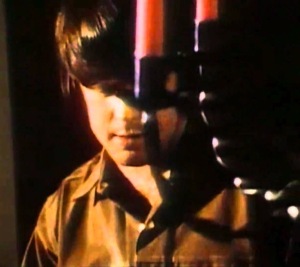 post-Smile body of Wilson recordings that is almost unknown to critics, historians and fans alike. L.A. Weekly recently was granted access to many of these never-before-heard tapes from 1968 to 1974 — almost 60 titles in all — currently stored at the Beach Boys’ archive on Vanowen Street, near Bob Hope Airport in Burbank. The tapes represent a treasure trove of material from the last period in which Wilson was at the peak of his songwriting abilities, a time when the chief Beach Boy ultimately took leave of his duties as the band’s writer-arranger-producer. That sudden departure would drive a wedge between him and his bandmates for decades to come.
post-Smile body of Wilson recordings that is almost unknown to critics, historians and fans alike. L.A. Weekly recently was granted access to many of these never-before-heard tapes from 1968 to 1974 — almost 60 titles in all — currently stored at the Beach Boys’ archive on Vanowen Street, near Bob Hope Airport in Burbank. The tapes represent a treasure trove of material from the last period in which Wilson was at the peak of his songwriting abilities, a time when the chief Beach Boy ultimately took leave of his duties as the band’s writer-arranger-producer. That sudden departure would drive a wedge between him and his bandmates for decades to come.
The rift began in the fall of 1966, when the Beach Boys returned from their tour of England. Lead singer Mike Love took issue with the Smile lyrics. Wilson’s newest collaborator, Van Dyke Parks, had penned lyrics on such weighty issues as the decimation of the Native American, Western expansionism and the fragile ecology. According to Parks, Love’s earlier paeans to souped-up hot rods and suntanned beauties were illusions that Wilson could no longer abide. The internal discord caused Smile to degenerate, then collapse, sending Wilson into a self-imposed exile in his bedroom, which led to his reputation as the Howard Hughes of rock & roll. “When the withdrawal began to attract notice,” says Jack Rieley, who managed the Beach Boys from 1971 to 1973, “Brian’s keen sense picked up on the fact [and fed] off the crumbs of legend available to ‘Brian Wilson, eccentric recluse,’ a hideous second-best to the public acclaim he was denied [with Smile].” We know now, however, that Wilson wasn’t simply growing his toenails. With a studio installed in the living room of his Bel-Air mansion, Wilson was able to craft intensely personal songs of gentle humanism and strange experimentation, which reflected on his then-fragile emotional state. MORE
PREVIOUSLY: Q&A WITH BRIAN WILSON
PREVIOUSLY: MIKE LOVE NOT WAR
PREVIOUSLY: TOP 10 THINGS I LEARNED SEEING BRIAN WILSON @ THE BEACON THEATER
RELATED: In theaters June 5, Roadside Attractions’ Brian Wilson biopic Love & Mercy presents an unconventional portrait of the music legend. Set against the era-defining catalog of the music, the film intimately examines the personal voyage and ultimate salvation of the icon whose success came at extraordinary personal cost. Directed by Bill Pohlad, starring John Cusack, Paul Dano, Elizabeth Banks and Paul Giamatti. Love & Mercy’s U.S. film festival premiere is confirmed for March 15 at SXSW Film.
VARIETY: Alternating back and forth in time, Pohlad and screenwriters Oren Moverman and Michael Alan Lerner eschew a long-winded biographical approach in favor of two temporally specific parallel narratives. In one, roughly covering the period from 1965-68, Dano plays Wilson as he resigns from touring, masterminds one of rock ‘n’ roll’s greatest masterpieces, and finds his grip on reality slowly loosening. In the second, set in the 1980s, Cusack shows us Wilson as a broken, confused man under the pharmacological and legal thrall of manipulative therapist Eugene Landy (Paul Giamatti), finding unlikely love with a Cadillac dealer named Melinda Ledbetter (Elizabeth Banks), who will later become his second wife.
Following a very brief, unfussy montage of the Beach Boys’ rise to ‘60s pop superpowers, we see Dano’s Wilson, still boyish enough to pass for a standard teen idol, suffer a panic 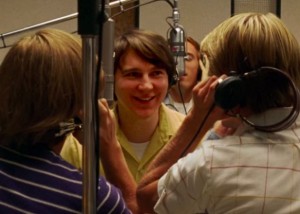 attack on a flight. Deciding to bow out of the group’s upcoming Japanese tour, he sets up shop in a recording studio alongside L.A. session masters the Wrecking Crew, with ambitions to record nothing less than “the greatest album ever made.”
attack on a flight. Deciding to bow out of the group’s upcoming Japanese tour, he sets up shop in a recording studio alongside L.A. session masters the Wrecking Crew, with ambitions to record nothing less than “the greatest album ever made.”
As he produces what will eventually become “Pet Sounds,” the film does well to capture Brian’s giddy sense of unmoored creativity as he brings in scores of nontraditional instruments and seemingly illogical arrangements to “play the studio” and one-up his erstwhile competitors Phil Spector and the Beatles. Yet he’s nonetheless nervous of what his bandmates, particularly the literal-minded Mike Love (Jake Abel), will think of his experiments when they return. Worse still, his cruelly disapproving father Murry (Bill Camp) lurks in the wings, and Brian begins to hear scattered voices in his head, a condition first alleviated and later exacerbated by his embrace of LSD. MORE
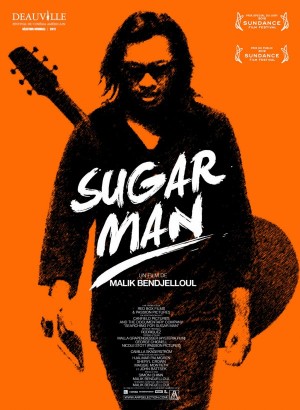 RELATED: Here’s a fairy tale for you. A mysterious, Dylanesque poet from the mean streets of Detroit makes a brilliant album of lush, faintly trippy folk-rock called Cold Fact. Like too many great pieces of art, the album fails to find its audience. The artist gives up on his musical dreams and settles into a twilight exile of obscurity and back-breaking manual labor. Meanwhile, unbeknownst to the artist, his music has sparked a fire and fueled massive social change across the globe in South Africa. His music is banned by the government, but everyone still seems to have a copy of it, trading it samizdat-style on 427th generation cassette tape dubs. It becomes part of the universal language of freedom there and the soundtrack to the toppling of apartheid. The people there dream of seeing the singer perform one day only to be devastated by the apocryphal word-of-mouth news that the artist long ago committed suicide on stage — some say he shot himself in the head, others say he doused himself in gasoline and lit a match. Still, he will always live on in the music. Fast forward 20 years. A musical detective in Capetown puts together the puzzle pieces and figures out that the singer is in fact alive and well and living in the inner-city ruins of Detroit. Huge concerts are planned in South Africa. The singer arrives and is hailed as a conquering hero and plays to large adoring crowds. A documentary is made and his music gets rediscovred in America, including an appearance on 60 Minutes and a sold out U.S. tour. Only this isn’t a fairy tale, it’s a true story. The mysterious artist’s name is Rodriguez, and the name of the documentary is Searching For Sugar Man. Rodriguez will return to the area for a concert at The Mann with Brian Wilson on June 29th, because some times even true stories have fairy tale endings. – PETE TROSHAK
RELATED: Here’s a fairy tale for you. A mysterious, Dylanesque poet from the mean streets of Detroit makes a brilliant album of lush, faintly trippy folk-rock called Cold Fact. Like too many great pieces of art, the album fails to find its audience. The artist gives up on his musical dreams and settles into a twilight exile of obscurity and back-breaking manual labor. Meanwhile, unbeknownst to the artist, his music has sparked a fire and fueled massive social change across the globe in South Africa. His music is banned by the government, but everyone still seems to have a copy of it, trading it samizdat-style on 427th generation cassette tape dubs. It becomes part of the universal language of freedom there and the soundtrack to the toppling of apartheid. The people there dream of seeing the singer perform one day only to be devastated by the apocryphal word-of-mouth news that the artist long ago committed suicide on stage — some say he shot himself in the head, others say he doused himself in gasoline and lit a match. Still, he will always live on in the music. Fast forward 20 years. A musical detective in Capetown puts together the puzzle pieces and figures out that the singer is in fact alive and well and living in the inner-city ruins of Detroit. Huge concerts are planned in South Africa. The singer arrives and is hailed as a conquering hero and plays to large adoring crowds. A documentary is made and his music gets rediscovred in America, including an appearance on 60 Minutes and a sold out U.S. tour. Only this isn’t a fairy tale, it’s a true story. The mysterious artist’s name is Rodriguez, and the name of the documentary is Searching For Sugar Man. Rodriguez will return to the area for a concert at The Mann with Brian Wilson on June 29th, because some times even true stories have fairy tale endings. – PETE TROSHAK
RELATED: THE WRECKING CREW (Magnolia Pictures), the acclaimed documentary nearly two decades in the making is finally set to hit the big screen with it’s theatrical release on Friday, March 13. The film will also be available video-on-demand the same day. A documentary film produced and directed by Denny Tedesco, son of legendary late Wrecking Crew guitarist Tommy Tedesco, the film tells the story of the unsung musicians that provided the backbeat, the bottom and the swinging melody that drove many of the number one hits of the 1960’s.Nearly two decades in the making, Denny spent years interviewing producers, engineers, and the musicians themselves to reveal the warmth and humor that allowed their collective talents to turn a simple chord chart into an international phenomenon and give a unique signature to recordings that are now part of the soundtrack of our lives.
RELATED: A little known fact outside of musician circles is that the instrumental tracks of many of the most beloved and iconic pop songs of the 1960s — The Beach Boys’ “Good Vibrations.” The Byrds’ “Mr. Tambourine Man,” Sam Cooke’s “You Send Me,” The Mamas & Papas’ “California Dreamin’,” The Monkees’ “Mary Mary,” Elvis Presley’s “Viva Las Vegas,” The Righteous Brothers’ “You’ve Lost That Lovin’ Feelin’,” Simon and Garfunkel’s “Mrs. Robinson,” Frank Sinatra’s “Strangers in the Night,” Sonny and Cher’s “I Got You Babe” to name but a few — were not performed by the artists credited. In reality, it was a crack team of Los Angeles session players who came to be known collectively as The Wrecking Crew that is responsible for what has become the soundtrack of our lives. Rarely credited on album sleeve liner notes, the Wrecking Crew players would show up at the studio, lay down their parts, collect a check for union scale, and then race off to another studio to lay down the indelible riffs, grooves and hooks that would score a million wedding receptions, birthdays, bar mitzvahs, graduation parties and, really, any place where generations come together and both young and old can all agree, like they will agree on anything again, with a nod of the head and a shake of the hips: these songs are deathless. MORE
RELATED: THE WRECKING CREW SPOTIFY PLAYLIST

